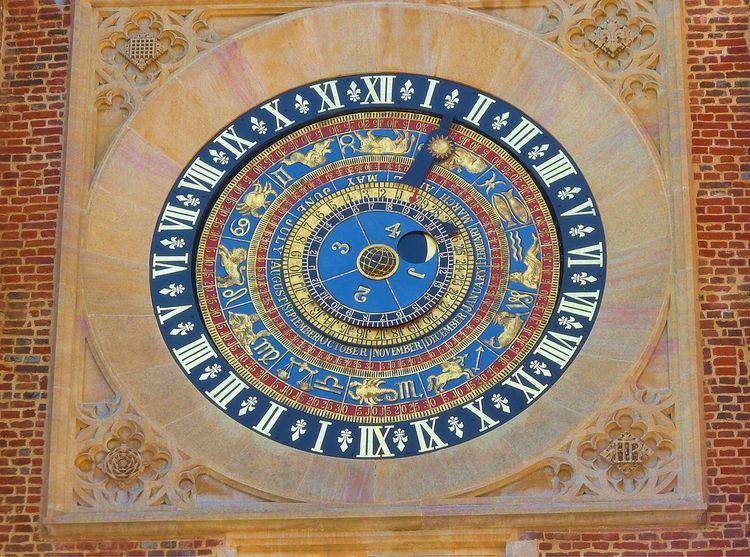 | ||
Hampton Court astronomical clock is a sixteenth-century astronomical clock in Hampton Court Palace.
History and description
The clock was installed in 1540 on the gatehouse to the inner court at Hampton Court Palace. It was designed by Nicholas Crazter and made by Nicholas Oursian. This pre-Copernican and pre-Galilean astronomical clock is still functioning.
The clock is 15 feet (4.6 m) in diameter with three separate copper dials revolving at different speeds and displays the following information:
The latter information was of great importance to those visiting this Thames-side palace from London, as the preferred method of transport at the time was by barge, and at low water London Bridge created dangerous rapids.
The clock was restored in 1711 by William Herbert. In 1831 the astronomical dial had been removed, and the mechanism was replaced with that from a clock dating from 1799 from St James's Palace. In 1879 the astronomical dial was found, and Gillett & Bland manufactured a new clock movement.
The clock was fully restored in 2007 and 2008 by the Cumbria Clock Company in time for the 500th anniversary of the accession of King Henry VIII.
